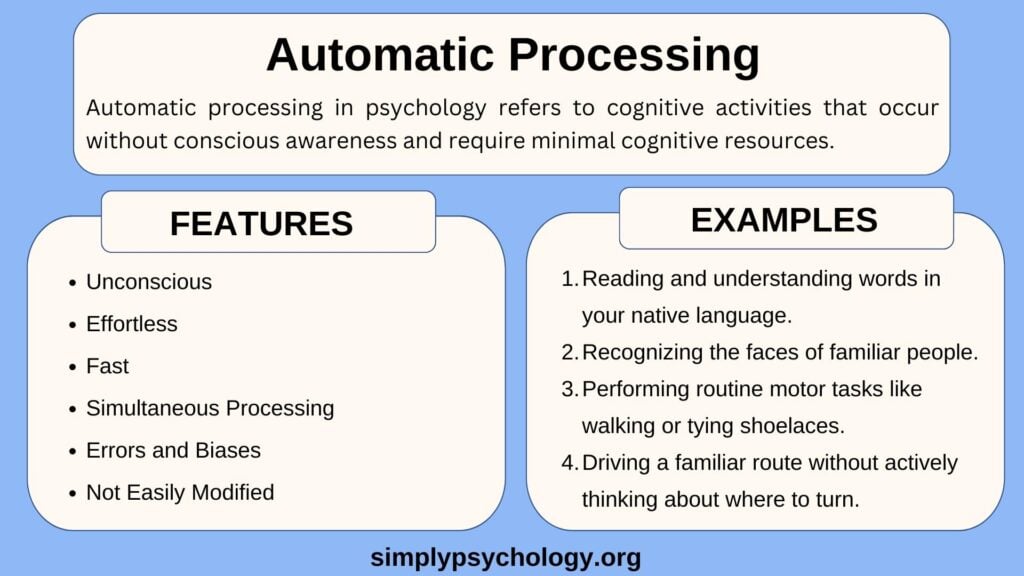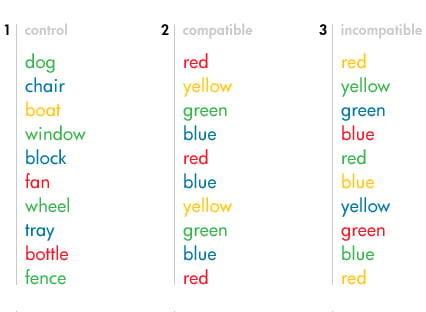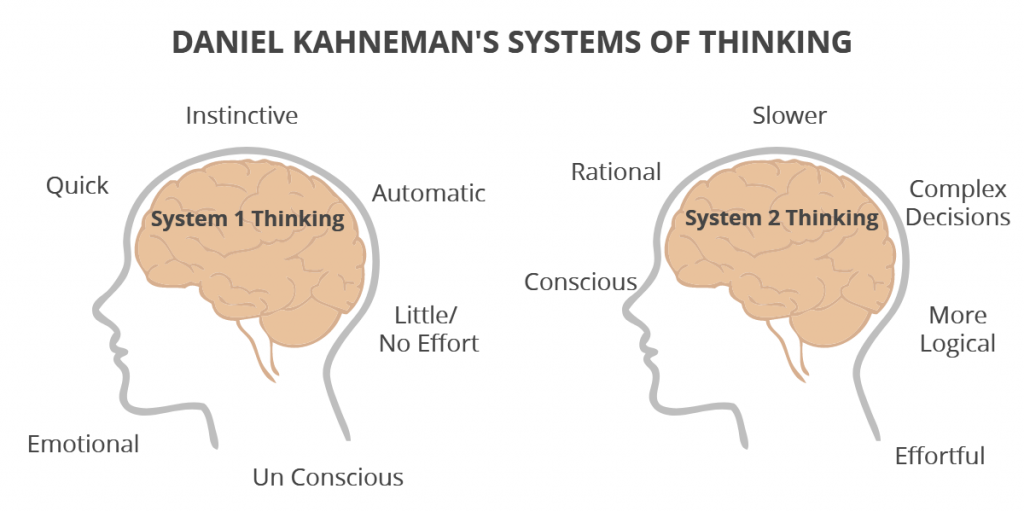On This Page:
Automatic processing in psychology refers to cognitive activities that are relatively fast and require few cognitive resources. This type of information processing generally occurs outside of conscious awareness and is common when undertaking familiar and highly practiced tasks.

These tasks or mental processes have become automatic through repetition and learning, meaning they no longer require focused attention to be successfully completed.
Automatic processing takes place when we are doing tasks without putting conscious awareness or intention into them.
For example, these include carrying out familiar tasks like reading, driving, cycling, playing a game, or observing things. They do not need much cognitive effort and are relatively easy to perform.
Key Features
Automatic processing is a critical component of cognitive functioning, allowing us to handle a multitude of tasks without overloading our cognitive resources. Here are some more detailed characteristics of automatic processing:
- Unconscious: Automatic processes do not require conscious awareness or control. We have performed these tasks so often that they have become habitual or ingrained, and we can do them without actively thinking about them.
- Effortless: Automatic processes require minimal mental effort. This is because they are typically well-learned tasks we have practiced extensively, so they do not demand the same cognitive resources as tasks we’re less familiar with.
- Fast: Automatic processes are quick and efficient. They enable us to respond rapidly to familiar stimuli or carry out routine tasks at high speed.
- Simultaneous Processing: Automatic processing is typically fast and efficient and can occur simultaneously with other cognitive tasks without causing significant interference. This is because automatic processes require less limited cognitive resources than controlled processes.
For example, we might be able to walk (an automatic motor task), talk (an automatic language task), and recognize a familiar face (an automatic perceptual task) all at the same time. - Not Easily Modified: Once an automatic process has been learned, it can be difficult to change or unlearn. This can be advantageous when the response is appropriate but problematic when circumstances change and the automatic response is no longer the best.
- Errors and Biases: Automatic processing can sometimes lead to errors or biases, especially when the task or situation changes unexpectedly or heuristics (mental shortcuts) lead to incorrect judgments or decisions.
Automatic Processing Examples
There are many examples of automatic processing that humans undergo in our daily life, such as:
- Reading and understanding words in your native language.
- Recognizing the faces of familiar people.
- Performing routine motor tasks like walking or tying shoelaces.
- Driving a familiar route without actively thinking about where to turn.
- Quickly deciding the meaning of a simple sentence.
Other examples include:
Stroop Effect
The Stroop Effect is a psychological phenomenon that demonstrates automatic processing.
In a standard Stroop task, participants are shown a list of color words (e.g., “red,” “blue,” “green”) printed in colored ink. The trick is that the color of the ink does not match the color name (e.g., the word “red” printed in blue ink).
Participants are asked to name the color of the ink, not read the word.
This task is challenging because reading words is a deeply ingrained, automatic process we’ve been practicing since childhood. Naming colors, on the other hand, is less automatic and requires more controlled, deliberate processing.

When people see a colored word, their automatic processing system reads it without conscious effort. However, when asked to name the ink color, they must suppress the automatic response (reading the word) and engage in controlled processing instead.
This conflict between automatic and controlled processing creates interference, slowing response times and increasing the likelihood of errors.
The Stroop Effect is thus a clear example of automatic processing because it shows how automatic responses (reading words) can interfere with tasks that require more controlled processing (naming colors).
It also illustrates how difficult it can be to inhibit an automatic response once triggered.
Heuristics
Heuristics are mental shortcuts or “rules of thumb” that we use to make decisions or judgments quickly and efficiently.
They are often used when we need to make a decision but don’t have the time, resources, or information to go through a full, logical decision-making process.
- Availability Heuristic: We estimate the likelihood of an event based on how easily examples of it come to mind. For instance, if you can easily recall news stories about plane crashes, you might overestimate the risk of air travel.
- Halo Effect: The halo effect is a cognitive bias where our impression of someone or something in one area influences our perception of them in other areas. For instance, viewing someone as attractive might also lead us to unconsciously judge them as being more kind or intelligent.
- Anchoring Heuristic: We rely too heavily on the first piece of information (the “anchor”) we receive when making decisions. For example, if the first car at a dealership is listed at a very high price, that might influence how you perceive the prices of subsequent cars.
Motor skills
The use of motor skills is a process of automaticity that can be defined as a state where other ongoing tasks do not significantly impact the performance of a primary task.
This means that the primary task can be carried out without conscious effort or attention, as the brain has become accustomed to the task through repeated exposure and practice (Poldrack et al., 2005).
Some examples of motor skills would be tasks such as walking, jumping, or riding a bicycle. You may notice that breaking up the walking steps is very difficult – our brain does not think too much about the steps needed to walk.
Instead, hours and hours of practice and repetition wire the task into our central nervous system, making the processes automatic.
Implicit Biases
Implicit bias (unconscious bias) is a form of bias that occurs automatically and unintentionally yet still impacts our judgments, decisions, and behaviors.
Implicit biases are an example of system 1 thinking, so we are unaware they exist (Greenwald & Krieger, 2006).
It could be against certain racial groups or any group in general. It is said to be shaped by the learned associations between certain qualities and social categories and is a part of implicit social cognition.
When humans exhibit implicit biases, they have perceptions, attitudes, and stereotypic thoughts that operate without their conscious acknowledgment or intention, making it part of the automatic processing (Greenwald & Krieger, 2006).
Cognitive Distortions
Cognitive distortions are irrational, inflated, or inaccurate thoughts and beliefs that distort our perception of reality, often contributing to mental health disorders such as anxiety and depression.
Cognitive distortions are automatic because they typically operate outside our conscious awareness. They are habitual ways of responding to certain situations or stimuli based on our past experiences, beliefs, and conditioning. They often influence our perceptions and decision-making processes without us realizing it.
Here are a few examples of common cognitive distortions:
- All-or-Nothing Thinking: Viewing things in black-and-white categories with no middle ground (e.g., “If I’m not perfect, I’m a failure”).
- Overgeneralization: Applying the outcome of one event to all similar events (e.g., “I failed this test, so I’m bad at all tests”).
- Catastrophizing: Expecting the worst-case scenario to happen.
- Personalization: Assuming excessive personal responsibility for events outside of your control (e.g., “It’s my fault that my friend is upset”).
- Mental Filter: Focusing exclusively on the negative aspects of a situation while ignoring the positive.
Priming
Another of our automatic processing at work is through priming. Priming refers to when an individual’s exposure to a stimulus further influences their responses to subsequent stimuli without them becoming aware.
It is often stated as implicit or non-declarative memory because people are oblivious to the effects of the first stimulus on current behavior and actions.
For instance, if someone is exposed to the word “yellow,” they will respond more quickly to the word “banana” than to unrelated words like “television.”
This is because yellow and banana are more closely linked in memory, causing people to respond faster when the second word is presented (Higgins & Bargh, 1987).
Advantages
Automatic processing has the advantages of being functional and robust under high-stress levels. It could be hard to “think straight” under stress, and this is where automatic processing comes in handy since it does not require as much mental capacity or guidance, and people can act accordingly under their instinct.
As people gain more experience, automatic processing allows people to be more comfortable in their environment since the repetition of events and outcomes makes people aware of the probable outcomes in certain settings without using too much brain power, which could be a depletion of energy.
For example, facial recognition and surrounding observation are said to be automatic processes. When we are in an environment, our eyes and ears automatically take in information without conscious awareness.
For instance, it would be hard to describe the process of sight; we don’t think about it other than simply doing it automatically. This is the same for walking, breathing, blinking, and other automatic processing.
This brings forward another advantage of automatic processing: it allows many processes to occur in parallel with each other. For example, the process of riding a bike. When people are riding a bike, we don’t think about how exactly our legs peddle up and down or the mechanics of a bike.
We just “know” how to do it. This allows people to be aware of the surrounding environment while biking and focus on more important things that need to be done.
This increases productivity and helps people focus on more urgent needs (Schneider & Chein, 2003).
Disadvantages
The convenience of automatic processing comes with disadvantages as well. One disadvantage is that automatic processing is more prone to mistakes due to its fast nature.
This means that automatic processing is more likely to make mistakes and be inaccurate compared to controlled processing, which could lead to undesirable results.
For example, when people drive, they rely on automatic processing to perform certain actions, such as changing lanes or turning left and right. However, if the driver is not paying attention or is very tired, this automatic processing may lead to mistakes that could cost lives.
For example, if at an intersection of the road, the driver is used to turning left, but the roads were fixed and changed so that the only turn one can make is turning right, the tired or distracted driver’s automatic response may cause them to turn left anyhow, leading to potentially fatal situations.
Another disadvantage of automatic processing is that it is less able to be changed and is more fixed. This is because automatic processes take longer to be wired into our brain, and when it is eventually wired, it could lead to bad habits or mistakes if we are not careful.
For example, if someone is used to typing using one finger instead of the right typing technique, it may be difficult for their brain to be rewired to use the correct technique later on.
Similarly, habits such as chewing one’s nails or procrastinating until the last minute may be challenging to break since the brain has been automatically wired to these behaviors.
System 1 Thinking
In cognitive psychology, automatic processing, which is slow, effortful, and conscious, can be mapped onto the concept of System 1 thinking as described by Daniel Kahneman in his book, “Thinking, Fast and Slow.”
System 1 is the brain’s fast, emotional, unconscious thinking mode. This type of thinking requires little effort, but it is often error-prone. Most everyday activities (like driving, talking, cleaning, etc.) make heavy use of the type 1 system.
System 1 thinking refers to our intuitive system, which is typically fast, automatic, immediate, and effortless. This kind of thinking often involves heuristics (mental shortcuts), and it’s driven more by our subconscious mind.
This is in contrast to System 2 thinking, which is slower, more deliberate, more effortful, and used for complex decision-making, problem-solving, and reasoning.

When faced with unfamiliar situations, we rely on system 2 thinking as it is less prone to errors. However, when we use system 1 thinking, we use mental shortcuts called heuristics, which may lead to illogical decision-making.
However, because System 2 is more cognitively taxing and slower, we can’t rely on it all the time, and thus, we often use System 1 for many of our daily tasks and decisions.
System 1 includes our “fight or flight” response and other instinctive reactions that can be critical for survival. These responses are fast and automatic, allowing us to react quickly to potential threats.
References
Evans, J. S. B., & Stanovich, K. E. (2013). Dual-process theories of higher cognition: Advancing the debate. Perspectives on psychological science, 8(3), 223-241.
Greenwald, A. G., & Krieger, L. H. (2006). Implicit bias: Scientific foundations. California Law Review, 94(4), 945-967.
Higgins, E. T., & Bargh, J. A. (1987). Social cognition and social perception. Annual Review of Psychology, 38, 369-425.
Kahneman, D. (2013). Thinking, fast and slow. Farrar, Straus and Giroux.
Kendra Cherry, Mse. (2021, June 18). How priming affects the psychology of memory. Verywell Mind. https://www.verywellmind.com/priming-and-the-psychology-of-memory-4173092
Poldrack, R. A., Sabb, F. W., Foerde, K., Tom, S. M., Asarnow, R. F., Bookheimer, S. Y., & Knowlton, B. J. (2005). The neural correlates of motor skill automaticity. The Journal of Neuroscience: the official journal of the Society for Neuroscience, 25(22), 5356–5364.
Posner, M. I., Snyder, C. R., & Solso, R. (2004). Attention and cognitive control. Cognitive psychology: Key readings, 205, 55-85.
Schacter, D. L., & Buckner, R. L. (1998). Priming and the brain. Neuron, 20(2), 185-195.
Schneider, W., & Chein, J. M. (2003). Controlled & Automatic Processing: Behavior, theory, and Biological Mechanisms. Cognitive Science, 27(3), 525–559.
Schneider, W., & Pimm-Smith, M. (1997). Consciousness as a message aware control mechanism to modulate cognitive processing. In J. Cohen & J. Schooler (Eds.), Scientific approaches to consciousness: 25th Carnegie symposium on cognition (pp. 65–80). Mahwah, NJ: Lawrence Erlbaum
Schneider, W., & Shiffrin, R. M. (1977). Controlled and automatic human information processing: I. Detection, search, and attention. Psychological Review, 84(1), 1-66.
Stanovich, K. E., & West, R. F. (2000). Individual differences in reasoning: Implications for the rationality debate Behavioral and Brain Sciences, 23(5), 645–665.
van der Linden, D., Frese, M., & Meijman, T. F. (2003). Mental fatigue and the control of cognitive processes: effects on perseveration and planning. Acta psychologica, 113(1), 45–65.

